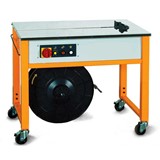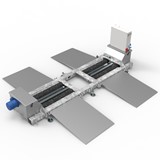Key Takeaways
- Labour savings are just the start. Basic automation like conveyors or AGVs can reduce labour costs associated with manual picking and transport by 20-40%, but the biggest gains often come from increased accuracy and throughput.
- Target repetitive tasks first. The highest ROI comes from automating simple, repetitive tasks like moving pallets from receiving to bulk storage (using AGVs) or transporting cartons from picking zones to packing stations (using conveyors).
- Accuracy improvements drive profit. Automated systems dramatically reduce picking errors. Cutting errors by just 1% can save thousands annually in return shipping costs, lost inventory, and customer dissatisfaction.
- Safety pays dividends. Implementing basic automation significantly reduces manual handling risks. With manual handling injuries costing Australian businesses billions, reducing these incidents lowers workers' compensation premiums and lost time.
- Start small, scale smart. You don't need a fully robotic warehouse. Begin with a single automated process (like inbound pallet movement) to prove the ROI before scaling your investment. Modern systems are often modular and scalable.
- Finance strategically to preserve cash. Use options like a chattel mortgage to claim GST upfront or a lease for lower monthly payments, and investigate Australian government incentives to offset the cost of your automation investment.
- Plan integration meticulously for existing sites. Conduct a thorough site audit before buying, implement automation in phases to minimise disruption, and involve your team early to manage the change effectively.
Introduction: The tipping point for warehouse efficiency
For Australian businesses running warehouses or distribution centres, the operational landscape in late 2025 is incredibly challenging. You're facing a perfect storm: persistent labour shortages, especially for pickers and forklift operators; rising wages; and intense pressure from customers for faster, more accurate deliveries. The traditional, manual warehouse model is struggling to keep pace.
Data from industry analysts consistently shows that warehouse labour can account for 50-70% of a facility's operating budget. Meanwhile, Safe Work Australia identifies the warehousing and logistics sector as having one of the highest rates of serious injuries, particularly from manual handling. In this environment, doing nothing is no longer an option. Basic automation is not a futuristic luxury; it's becoming a practical necessity for survival and growth. This article provides a clear guide for Australian warehouse managers on how to calculate the real ROI of introductory automation and identify the low-cost solutions that deliver the biggest impact.
The high cost of sticking with manual processes
Before looking at solutions, it's crucial to quantify the true cost of your current, manual-heavy operations. The pain points often go far beyond just the hourly wage bill.
- Labour Costs & Shortages: Finding and retaining reliable warehouse staff is a major challenge across Australia. High turnover leads to constant recruitment and training costs. Relying solely on manual labour makes your operation highly vulnerable to absenteeism and market wage pressures.
- Human Error Rates: Manual picking processes typically have error rates of 1-3%. While that sounds small, for a business shipping thousands of orders, it translates into significant costs from return shipping, damaged stock, and lost customer goodwill.
- Safety Risks & Costs: Manual handling of heavy or awkward items is inherently risky. Serious injury claims related to manual handling can cost businesses tens, if not hundreds, of thousands of dollars in compensation, increased premiums, and lost productivity.
- Throughput Limitations: There's a physical limit to how fast a person can walk, pick, and pack. Manual processes create inherent bottlenecks that cap your facility's potential output, especially during peak seasons.
Identifying the low-hanging fruit: Where to start your automation journey
You don't need to automate everything at once. The key is to target the processes where basic automation delivers the biggest and fastest return. For most warehouses, these are tasks characterised by high repetition, long travel distances, or significant manual handling risks.
- Inbound Pallet Movement: Automating the movement of pallets from the receiving dock to bulk storage using Automated Guided Vehicles (AGVs) or pallet conveyors is often a prime starting point. This is a simple, highly repetitive task currently done by forklift operators, a role facing significant labour shortages.
- Order Picking Travel: In many warehouses, pickers spend up to 60% of their time simply walking between locations. Implementing simple zone picking with conveyors to transport totes between zones, or using basic Goods-to-Person (GTP) systems where shelves are brought to a stationary picker, can drastically cut this wasted travel time.
- Carton Transport: Using simple belt or roller conveyors to move picked cartons from the aisles to a central packing or dispatch area eliminates the need for pickers to push heavy trolleys long distances, improving both speed and ergonomics.
Practical 'basic' automation solutions
"Automation" doesn't have to mean complex robotics. Several proven, relatively low-cost technologies offer significant ROI.
- Conveyor Systems:
- Technology: Simple belt, roller (gravity or powered), or flexible/telescopic conveyors.
- Best for: Transporting cartons, totes, or individual items between zones (receiving, picking, packing, dispatch).
- ROI Drivers: Reduced walking time for pickers, faster throughput, improved ergonomics.
- Automated Guided Vehicles (AGVs):
- Technology: Simple robotic vehicles that follow set paths (e.g., magnetic tape, QR codes) to transport pallets or carts. Often referred to as AMR's (Autonomous Mobile Robots) when more flexible navigation is used.
- Best for: Replacing forklifts for routine, long-distance pallet movements (e.g., dock to storage, storage to production line).
- ROI Drivers: Reduced reliance on forklift operators, improved safety (fewer collisions), consistent transport times.
- Semi-Automated Picking Technologies:
- Technology: Systems like pick-to-light (lights direct pickers to the correct location) or voice picking (headsets provide instructions).
- Best for: Improving the speed and accuracy of manual picking within existing shelving.
- ROI Drivers: Increased picking speed (10-30% improvement is common), dramatically reduced error rates (often below 0.1%).
Building your business case: Calculating the full ROI
To justify an investment in automation, you need to look beyond just the potential labour savings. A robust business case quantifies all the benefits.
A realistic scenario: Conveyor system for picking
A small e-commerce distribution centre in Sydney employs 10 pickers who walk long distances pushing trolleys. They are considering a $150,000 investment in a simple conveyor system to transport picked items to the packing area.
- Step 1: Calculate Labour Savings: The system is projected to reduce picker walking time by 40%, effectively increasing their picking productivity. This might allow the centre to handle 25% more orders with the same headcount, or maintain current volume with 8 pickers instead of 10. This direct labour saving could be $100,000+ per year.
- Step 2: Factor in Accuracy Gains: Reducing picker fatigue and implementing barcode scanning at packing could cut the error rate from 1.5% to 0.5%. If the average cost of fixing an error (returns, reshipping) is $50, and they ship 1000 orders a day, this saves over $180,000 per year.
- Step 3: Consider Safety Improvements: Reducing the need for pickers to push heavy trolleys significantly lowers the risk of manual handling injuries. While harder to quantify upfront, avoiding just one serious injury claim can save $50,000 or more.
- Step 4: Calculate Payback: In this scenario, the combined savings provide a payback period of well under 12 months, making it a compelling investment.
Financing your automation investment
For many Australian businesses, the biggest hurdle to adopting automation isn't the technology itself, but the upfront capital cost. However, viewing automation purely as a cost overlooks its potential as a high-return investment. A smart financing strategy is key to unlocking these benefits without draining your vital working capital.
Preserve your cash flow
Even if you have the cash reserves, financing major equipment is often the smarter strategic move. Your working capital pays wages, covers inventory, and handles unexpected costs. Financing allows you to acquire an asset that generates efficiency savings immediately, using those savings to cover the predictable monthly payments, while keeping your cash buffer intact for operational resilience.
Australian finance options
Several structures are common for financing warehouse automation in Australia:
- Chattel Mortgage: This is often the preferred option. You take ownership of the equipment from day one, allowing you to claim the full GST on the purchase price back on your next BAS – a significant cash flow injection. You can also claim depreciation and interest as tax deductions.
- Lease Agreement: A lease offers lower monthly payments as you are essentially renting the equipment. This is treated as an operating expense (Opex) and can be beneficial for budgeting. It's particularly useful for technology that might become outdated, offering a simpler path to upgrade.
- Consider a specialist broker: An asset finance broker specialising in industrial equipment often has access to a wider range of bank and non-bank lenders than your primary bank. They understand the technology and can structure finance that best suits your needs.
Integrating automation into your existing warehouse
Most businesses aren't starting from scratch; they're trying to integrate new automation into an existing facility. This 'brownfield' integration presents unique challenges but can be managed successfully with careful planning. Expecting plug-and-play simplicity is unrealistic; a structured approach is essential.
The critical site audit
Before buying any automation hardware, conduct a detailed audit of your current site. A basic AGV, for instance, requires smooth, level floors free from cracks or major inclines. Key checks include:
- Floor Quality: Is it suitable for the proposed technology (e.g., AGV navigation, conveyor stability)?
- Layout Constraints: Identify fixed obstacles like columns, existing racking, or low ceilings that will impact system design.
- Power and Data: Do you have sufficient power capacity and network connectivity where the automation will operate?
Phased implementation to minimise disruption
You likely can't afford to shut down your warehouse for weeks. Work with your automation supplier to develop a phased rollout plan. This might involve automating one process or area at a time (e.g., the receiving dock first, then outbound packing six months later). This minimises disruption to daily operations and allows your team to adapt gradually.
Managing the human element
Your existing team might feel anxious about automation replacing their jobs. Clear communication and involvement are crucial for success.
- Explain the 'Why': Frame the automation as a tool to help them, taking over the strenuous, repetitive tasks (like walking 15km a day pushing a trolley) and freeing them up for higher-value roles (like quality control or system monitoring).
- Involve Your Team: Get your experienced warehouse staff involved in the planning and testing phases. Their practical insights are invaluable for designing a system that works in the real world.
- Invest in Upskilling: Provide training to allow current staff to operate, manage, or maintain the new systems. This demonstrates a commitment to their development and builds buy-in.
Conclusion
In the demanding Australian logistics landscape, basic automation is transitioning from a competitive advantage to an operational necessity. By strategically targeting repetitive, error-prone, or physically demanding tasks with proven technologies like conveyors and AGVs, you can achieve significant returns. The ROI is measured not just in reduced labour costs, but in vital improvements to accuracy, speed, and workplace safety. For Australian warehouses looking to overcome labour challenges and meet rising customer expectations, the time to invest in basic automation is now.






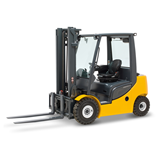
-160x160-state_article-rel-cat.png)
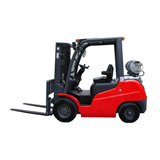
-160x160-state_article-rel-cat.png)
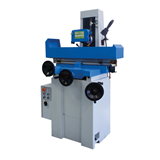
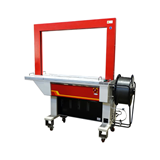
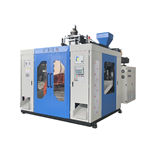


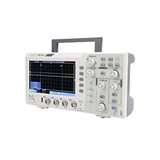



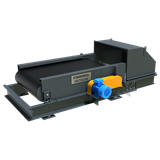
-160x160-state_article-rel-cat.png)

